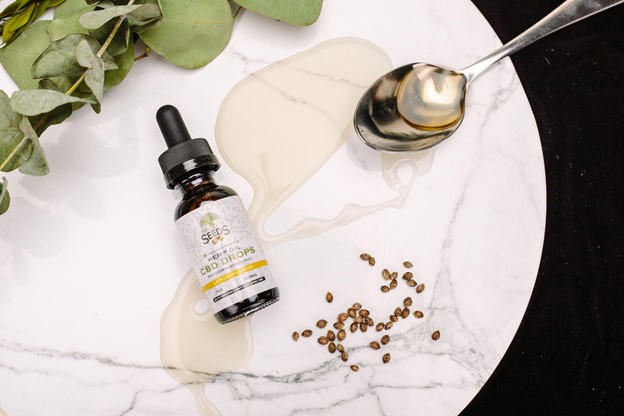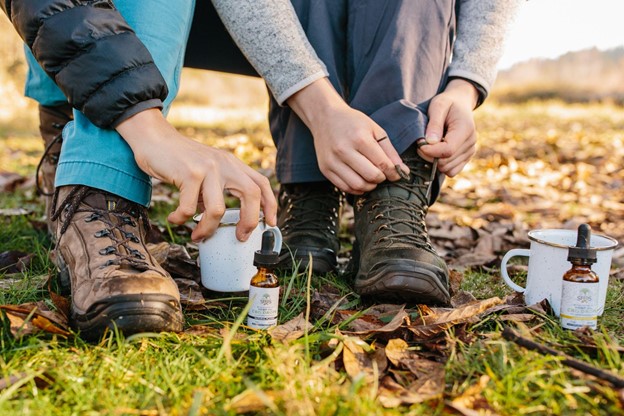
Differences between Full-Spectrum, Broad-Spectrum, and Isolates
It’s been proven that CBD can have various effects on the body and endocannabinoid system, but did you know there are three different types of CBD oils you can use for health benefits? Full-spectrum, broad-spectrum, and isolates are all beneficial but you’ll want to learn more to know which is right for you.
Keep reading to learn exactly what the three spectrums are, what it means to you, and which one works best for your situation.
How Full Spectrum, Broad Spectrum, & Isolates Work
To understand how full-spectrum, broad-spectrum and isolates work, you first must understand the endocannabinoid system.
The ECS was developed alongside the identification and synthesis of THC, the psychoactive compound in the cannabis plant. Once THC was identified in the cannabis plant, studies began on exactly how it interacted with the body and Israeli scientists soon found out there was an entire system in the body regulating specific body functions.
Sleeping, eating, and pain management are just some of the functions regulated by the ECS and it was discovered that the consumption of cannabis was interacting with these areas. As people consumed cannabis, they increased the amount of endocannabinoids in the body’s system and would in turn cause CB-1 and CB-2 receptors to activate nerve cells.
The nerve cells are responsible for pain management, appetite, sleep regulation, breathing and more. As you activate these cells, you start to improve these bodily functions throughout the entire body.
Using the Entourage Effect
When scientists identified the THC components of the cannabis plant, they also started to recognize how it interacted with the other compounds. They realized that the more terpenes, flavonoids, and other cannabinoids THC was surrounded by, the more effect it had on the body’s ECS. So, people could still get the effects of anyone phytochemical, but they wouldn’t see nearly as many results than if they had more phytochemicals involved.
This was termed The Entourage effect and it means the entire hemp plant that contains CBD is much better than isolating any of the components. This is how you get the three different spectrums we have today; full-spectrum, broad-spectrum, and isolates. The terms refer to the amount of cannabinoids, terpenes, and flavonoids that are in the oil.
Of course, this means that there will be some lower-level amounts of THC contained in the full spectrum but not nearly the amount you’d have with the marijuana plant.
What Is Full-Spectrum?
Full-spectrum means that during the extraction process the maximum number of phytochemicals were retained, including THC. This is the best way to receive all the benefits you can from the oil because all the extraneous lipids have been removed and it’s as close to the original plant material as possible. The only way to really tell if an extract oil is actually full-spectrum is by testing the original material and then testing the oil after the extraction process.
You won’t find a full-spectrum oil nearly as easily as a broad-spectrum of a CBD isolate. That’s because full-spectrum oils have a harder extraction process. The terpenes and flavonoids are more reactive and volatile than cannabinoids. You’ll be able to notice a full spectrum pretty easily by its dark color and earthy taste
What Is Broad-Spectrum?

Broad-spectrum oils are unique in that they do have a variety of terpenes, flavonoids, and cannabinoids but they don’t really contain any THC. This means they might have THC, but at such a minuscule amount there is no risk of anyone having psychoactive experiences using them. Federal laws regulate that a hemp plant must contain less than 0.3% THC in order to be legal and the broad spectrum follows that regulation.
Broad-spectrum can also be made in a couple of different ways. You can start with a CBD isolate and begin adding terpenes and flavonoids back into the process or you can distill a full-spectrum oil to remove THC.
The broad spectrum might look similar to the full spectrum but they should be lighter in color, comparatively, and should have less of a bold, earthy taste. Broad-spectrum oils will have a medium amount of cannabinoids, terpenes, and flavonoids compared to isolates and full spectrum.
What Is an Isolate?
Isolate is the purest cannabinoid extract you’ll be able to get on the market. It comes in the form of a powder that you can use to add to pretty much anything you want. You can throw it in your drinks or mix it in with your food in order to consume the powder.
It’s 99.9% pure crystalline powder and it gets to these high levels by adding a secondary process after distillation. The isolate is thrown through a solvent process after the distilling has occurred in order to get it into a fine powder with high levels of cannabinoids.
The process is more expensive than it is to create the other spectrums on this list but producers can make up for this loss by using cheap extracts as a base. Because the end product is so pure, producers never have to worry about any impurities or residual components coming through after the solvent process.
Isolates are perfect for people on the go who prefer convenience over a full range of benefits. You won’t have any of the terpenes, flavonoids, or cannabinoids that are contained in the other spectrum oils so the results won’t be nearly as effective.
Choosing the Right Spectrum For You
Cannabinoid extracts can be mighty bitter since they come from the cannabis plants and if you don’t add in some of the other components like terpenes and flavonoids, some people have a hard time taking them.
The terpenes and flavonoids not only give you a host of therapeutic effects but also give CBD its range of flavors, smell, and depth. If you want the true effects studied in the Entourage Effect then you will want to stick with the broad and full-spectrum oils. This is especially true if your product is low in CBD because it will give you more bang for your buck going with a broad or full spectrum.
The only issue with broad and full-spectrum oils is that they are hard to make consistent with every single batch. Even with proven formulas that attempt to recreate the same extract every time, it’s a bit like making wine. Not every year is going to taste the same even though it all comes from the same grape. With isolates, you can scientifically recreate the exact same extract every single time. That makes it much easier for consumers to know what they’re getting and exactly what effect it’s going to have on them.
Producers can also add in several kinds of flavorings to help with the bitterness of the product and to appeal to the user.
The right spectrum for you will depend on the physical effects you receive from the different extracts. Wellness-focused users will tend to prefer the effects of broad and full spectrum while people who lead busier lives who value consistency and convenience will more likely gravitate towards isolates.
Full Spectrum, Broad Spectrum, & Isolate Differences
Full-spectrum, broad-spectrum, and isolate extracts all refer to the amount of cannabinoids, terpenes, and flavonoids that exist in the product. If you want a more well-balanced extract, you’ll like full and broad spectrums but if you prefer consistency, you’ll prefer the isolates.


